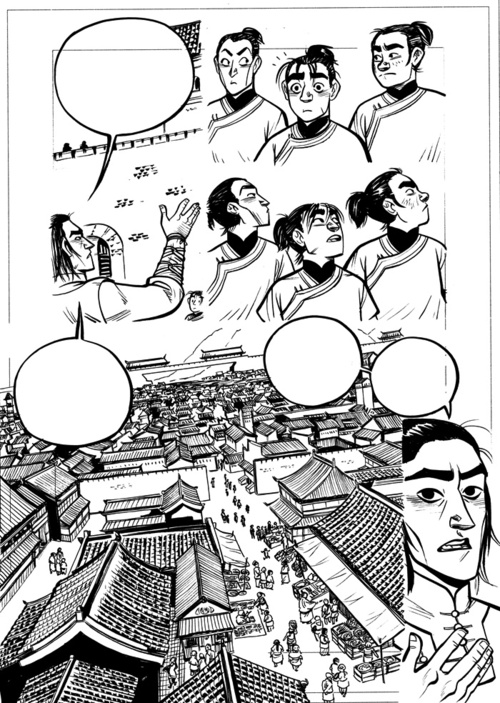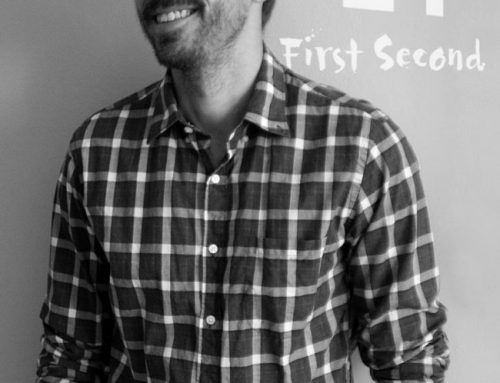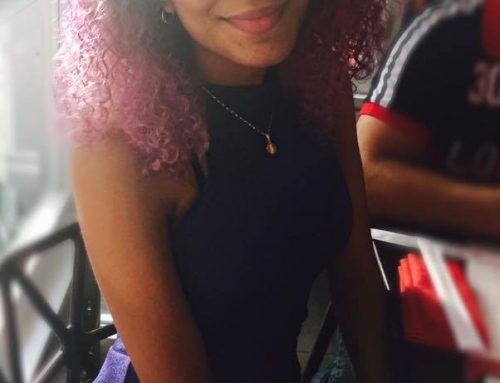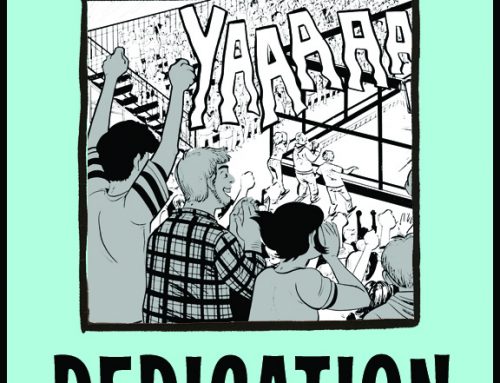test heading
(some early art from Faith Erin Hicks’ upcoming graphic novel, The Nameless City — which she shared on her tumblr in a discussion of paper vs. digital art creation processes)
When you have a book contract, it is time to rejoice! Your book will be published! By a publisher! It will go out into the world and be read and enjoyed by thousands of people!
. . . and now you have to make the book, which is a process that may take years and leave you alone in your home/office/studio all the while. You’re spending days and weeks and months drawing and writing, all on a project that you won’t be able to share with people for years. And the internet is right there. . . .
Obviously, you don’t want to give major parts of your story (say, the plot twist!) away. But how much is it appropriate to share with readers online before it’s published?
The first thing to know here is, you should talk to your publisher first! They may be planning a book announcement, cover reveal, excerpt reveal, or something along those lines that they’ll want to coordinate on a larger scale than by just putting something up on your tumblr.
The second thing to know is, there’s a lot that you can share. Putting your complete and final graphic novel up page-by-page as you finish it is probably not the ideal way to share a book. But sharing some part of everything you’re working on is probably very doable and reasonable!
Here are some thoughts about what can be good to share.
Share something that’s not final. Usually, when people are making comics, the in-process parts look very different from the finals. That means that there are a lot of stages — thumbnails, blues, pencils, inks, color tests — that it’s easy to share without being like, ‘I am revealing the whole story!’ Plus, pages that are partially inked or colored look really cool! People can see the art happening!
As a bonus to this — you can also share information about your working process. Your tools, about your workspace, the way you hold a brush, the kind of paper you use are all very photographable and shareable. No one at your publisher is going to be calling you up and saying, ‘I can’t believe you told your readers you use a micron! That sort of information is confidential!’
Share something partial. Comics are extremely helpful in this, as every page has multiple panels on it! So even if you’re watercoloring your final art, you can share a panel or two — or a detail from a scene — without giving away the plot of the book. ‘Look, adorable rabbit!’ is a completely acceptable part of your graphic novel to share before publication, especially if the rabbit is just there to be part of the background scenery where your protagonist’s exciting woodland exploration is taking place.
Share your graphic novel without revealing the whole thing. So, you’re done with your book and you want to celebrate with the internet — that’s great! Maybe you can stack all the pages up and take a picture of the stack. Or lay all the pages out on the floor and take a far-away shot of them.
Share your mistakes. ‘This preliminary design for a pirate robot turned out more sinister than expected and we had to go with something different,’ is interesting for everyone. (You don’t have to share anything too embarrassing.)
And finally — don’t worry too much about this! If you abide by the ‘don’t share everything’ and ‘don’t give away too much’ rules, you’re probably 100% safe — and you’ve also helpfully just spent the past two years showing tantalizing glimpses of your upcoming book to a gradually more-excited group of readers.
There isn’t a tipping point where readers are like, ‘So many panels-in-progress from this book! My eyes! I have seen too much and will never be able to purchase this delightful story from a retailer!’






Can it still be attractive to publishers if the web version is more of a draft? Can I do damage control and take it down, if it’s not a very high traffic blog? Thanks for your insights.